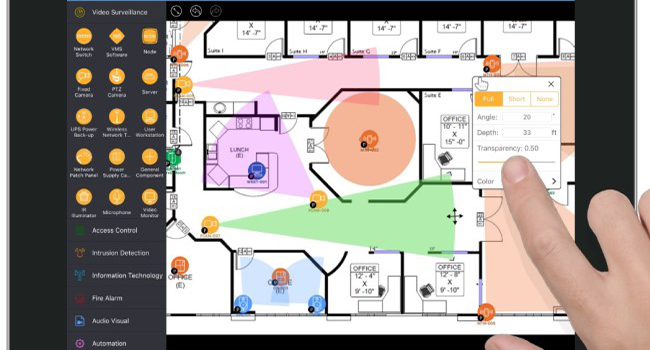
The Secret to More Efficient Campus Security System Planning and Maintenance
Lowering costs and mitigating security risks
- By Lisa Hugman
- July 12, 2017
Campus security is a top priority for school systems, universities and community colleges. The desire is to be more proactive and less reactive on all things relating to maintenance and infrastructure. The complexity lies in the sheer number of different technologies needed to provide campus security and the distribution across a campus(s) in a district or region.
The use of surveillance, access control, intrusion detection and a host of technologies requires effective planning, installation and maintenance to ensure reliability. It’s a tall order to do it cost efficiently with a small staff and meet the needs of campus leaders and administrators.
Conducting a Treasure Hunt to Find All Your Technology?
In many cases, security leaders have inadequate ‘as built’ plans and asset information about what systems are presently installed at their campus and their status in terms of maintenance and software or hardware upgrades. They may send a tech to go on the “treasure hunt” to identify assets to put on a plan using CAD. The problem is trying to find specific rooms and hallways without an effective, updated map of the school, to know where the technology is located. Because CAD does not work well as a mobile tool, there is a disconnect with what is in the field and what is on a CAD plan back at the office.
To complicate matters, because these systems are considered under the umbrella of the Internet of Things (IoT), information about IP-based security assets are not only needed to maintain systems but also to protect the campus from cybersecurity threats that are being perpetrated using the security devices themselves.
Now, for the good news. The pervasive adoption of mobile tablets, integrated cameras and access to secure collaboration make this problem addressable. The secret to more efficient campus security system planning and management is to adopt the right tools that move from manual system management to digital system design and management. The impact can go beyond important cost savings to actually mitigating security risks.
3 Ways a Digital Floor Plan Improves Campus Security Systems
1) Consistently capturing all the details in one place – How many surveillance cameras do we have at that campus? Where are they capturing recordings? What access control and door locks are in use? There are many moving parts to form an operable system. The ability to capture this information using drag and drop on a digital floor plan that can be saved, modified and accessed securely anytime, anywhere changes everything. No longer is the team reliant on old paper floor plans, spreadsheets and pictures on a cell phone. All of the requirements can be captured consistently with pictures associated directly to a dorm or a classroom or a specific campus building. Not only is it beneficial for design but also for ongoing asset management.
2) Collaborating with administrators, educators and public safety – Imagine the administrative team wants to put together a new campus security plan and present it to local public safety leaders and the superintendent. Do you have the plan ready to share? With a digital floor plan, there is an opportunity to visually and securely share plans and to collaborate in the design phase, for budgeting purposes or to evaluate maintenance windows. Using a digital floor plan and tool, security managers can work more closely with system integrators in real time to efficiently plan new systems and ensure faster roll-outs or maintenance.
3) Using “living” digital plans for better life cycle management - Security systems are only as good as they are up-to-date and operating to specification. The failure of a security camera in the case of an incident can be of serious consequence. A digital floor plan puts everyone on the team on the same page to ensure that systems are cost efficiently maintained. The team will have better visibility into system life expectancy, depreciation and replacement costs before they become a surprise expense for the district or university. There are fewer truck rolls for the system integrator and less guesswork and mistakes. In essence, the minute a floor plan is printed, it is out of date; whereas a digital “living” floor plan is updated and ready for reference or changes at all times.
Getting Your Campus Security Team on the Same Page for This Fall
Campus security is only one area that digital floor plans and mobile tools can help. Campus audio-visual (AV), IT, Fire Alarms and any system that require technology devices, cabling or other system elements can take advantage of these advances. If you need to pinpoint where technology is on the campus, getting on the same page with an electronic floor plan will help.